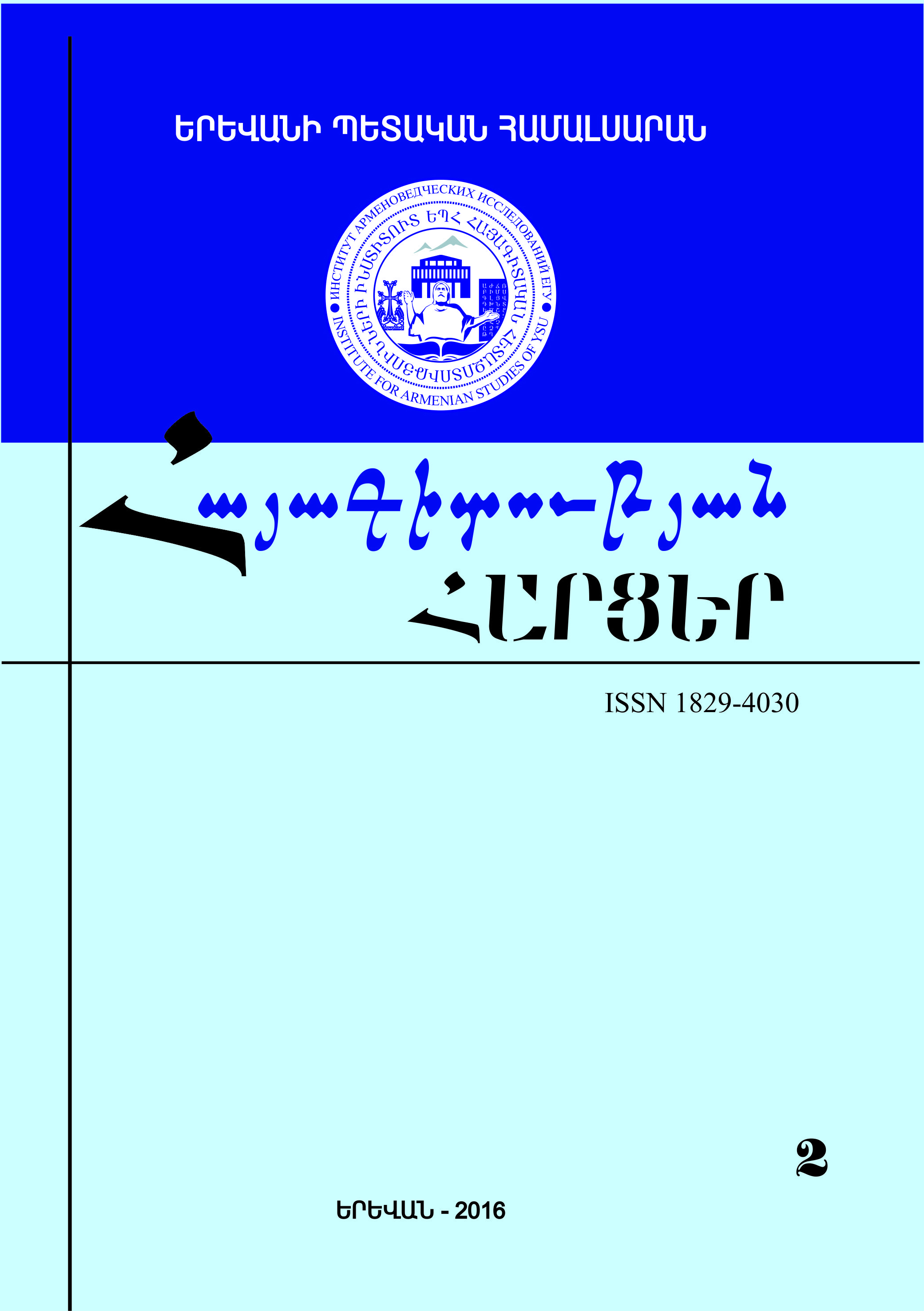Հայոց ազգային ժողովի և Հայոց ազգային խորհրդի ստեղծման պատմությունից (1917 թ. փետրվար-հոկտեմբեր)
Abstract
In the post-revolutionary period, events of crucial historical importance for the Armenian people took place. On the 9th of March, the interim government abolished the Viceroyalty and for managing the region, created the Transcaucasian Special Committee which failed to regulate the interracial issues. In addition to pan-Transcaucasian organs, late in 1917 arose the necessity of creating the third Government in the person of Armenian, Georgian and Tatar National Councils. In the joint consultation of the last session on October 13 on a general agreement, two governing organs were offered to be elected – the National Assembly and the National Council.
The National Assembly was to serve as the Supreme legislative body for the Armenian provinces of Transcaucasia. The National Council was the supreme executive body of the National Assembly. By the concurrence of historical circumstances, Armenian National Council was exercising actual legislative and executive functions, which served as the basis for the creation of future independent Armenian statehood.

